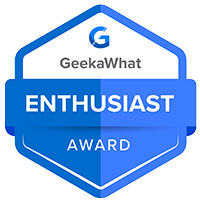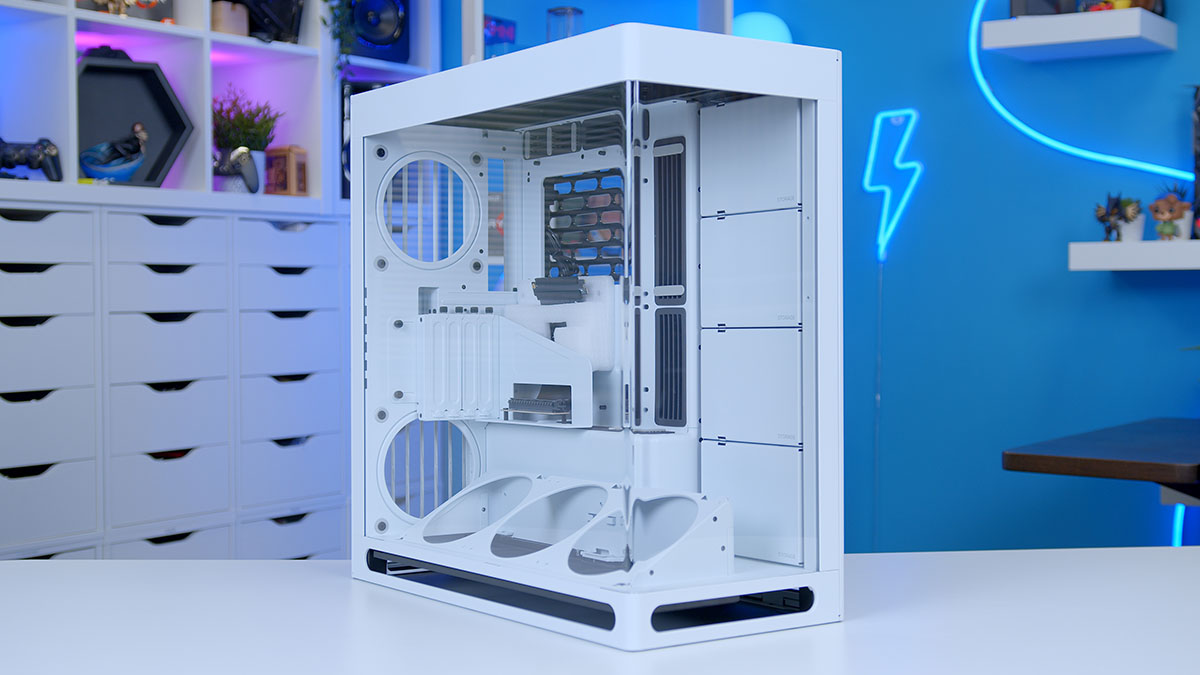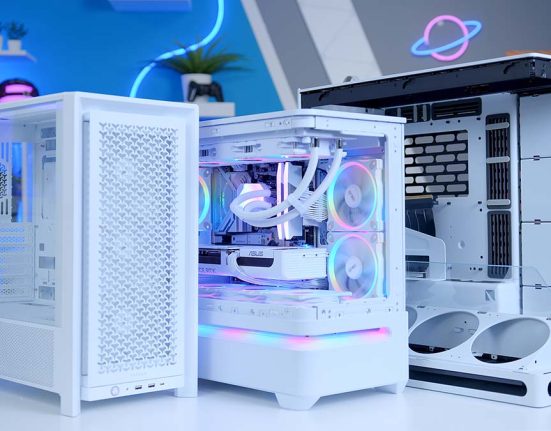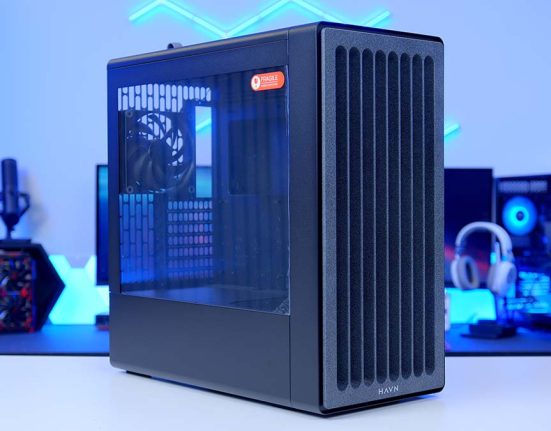The HAVN HS 420 is not only a high-end gaming PC case looking to provide gaming enthusiasts with the means to assemble a jaw-dropping system, but also marks the introduction of the HAVN brand as a whole. Because of this, HAVN are eager to get off the starting blocks on the right foot with a chassis built with high-performance gaming PCs in mind. For those who may be sceptical or curious about what this emerging manufacturer can bring to the table, we’ll be putting the HAVN HS 420 to the test, sharing our experiences building in the case along the way.
There are two versions of this case: the HAVN HS 420 and HAVN HS 420 VGPU. As the name would suggest, the ‘VGPU’ edition allows graphics cards to be mounted vertically, while the standard model sticks to a traditional horizontal mount. With a team comprised of designers that had previously worked with brands such as Fractal Design, NZXT, Cooler Master and more, HAVN have spent over two years developing a case they believe is unrivalled when it comes to performance and customisation.
In this review, we’ll be putting those claims to the test by analysing the design, features, and practicality of the HAVN HS 420. We’ll also build a high-end gaming PC inside this case, providing our honest feedback on the experience.
Buy the HAVN HS 420:
Specification
The specs of this chassis alone indicate that it is designed with enthusiasts in mind, as each section supports a wide range of components. Despite this, the HAVN HS 420 maintains a mid-tower form factor, even if it leans towards the larger end of this category.
A prime example of the versatility that the HS 420 provides is the motherboard support, which spans from Mini-ITX to E-ATX, as many mid-tower designs struggle to support larger E-ATX motherboards. In addition, the HS 420 provides significant clearance for GPUs, PSUs, and CPU Coolers, which means this chassis should have no issues accommodating flagship components such as the RTX 4090.

However, the extensive cooling support is what stands out the most on the HAVN HS 420. With the ability to install a 420mm AIO in multiple locations, as well as up to eleven 140mm fans, the HS 420 is well-equipped to keep the temperatures of the most power-hungry builds in check. Most fan mounting locations will also support 120mm fans, except for the bottom mount on the HS 420 VGPU, which only supports 140mm fans.
| Key Specs | HAVN HS 420 |
|---|---|
| Form Factor | Mid-Tower |
| Motherboard Support | Mini-ITX, Micro-ATX, ATX, E-ATX |
| Case Dimensions (L x W x H) | 541mm x 260mm x 547mm |
| Front IO | 1 x USB 3.2 Gen2 Type-C 2 x USB 3.2 Gen1 Type-A 1 x Audio Jack |
| PCI-E Slots | 6 |
| Colour | Black White |
| Max Clearance | 185mm CPU Cooler Height 480mm GPU Length 220mm PSU Length |
| Drive Support | Up to 8 x 2.5 inch Up to 4 x 3.5 inch |
| Fan Support | Front: N/A Top: 3 x 140mm Side: 3 x 140mm Bottom: 3 x 140mm Rear: 2 x 140mm |
| Radiator Support | Top: Up to 420mm Side: Up to 420mm Bottom: Up to 420mm |
| Pre-Installed Fans | None |
| MSRP | HS 420 – $199 HS 420 VGPU – $269 |
There are some other minor differences between the HS 420 and HS 420 VGPU, such as the aforementioned fan support and 10mm less GPU clearance on the HS 420 VGPU. However, this is a small sacrifice for those picking up the VGPU model, as this is unlikely to affect the case’s ability to support modern components.
Another exciting aspect of this case is the drive support, as this chassis can support up to a whopping eight 2.5″ drives and up to four 3.5″ drives. However, this does come with a small caveat, as it requires you to replace the side fan and radiator mounts.

Regarding connectivity, the HAVN HS 420’s IO includes four ports: one USB 3.2 Gen2 Type-C, two USB 3.2 Gen2 Type-A, and a 3.5mm audio jack. This is perhaps the most underwhelming area of this chassis because it matches the connectivity provided in most modern cases. Having more USB ports, in particular, to easily connect gaming peripherals would have been very beneficial, so this feels like a missed opportunity.

Finally, the HAVN HS 420 comes in at an MSRP of $199, with the HS 420 VGPU raising the price to $269. This case is unsurprisingly more expensive than the average PC case on the market, but it is pretty reasonable compared to other designs targeted towards PC building enthusiasts. More specifically, this price point puts the HS 420 in a similar position to the HYTE Y60 and HYTE Y70 Touch, which seems justified when comparing these designs.
HAVN HS 420 Design
In a market saturated with ‘Fish-Tank’ dual chamber PC cases, any new chassis entering the space needs to have several unique selling points, which result in a stunning aesthetic and plenty of practical benefits. After taking a closer look at both HAVN HS 420 models and delving into the features provided, there are certainly enough selling points in this design to grab the attention of those looking to build a luxurious gaming PC.

Starting with the aesthetics, the HAVN HS 420 is a very eye-catching design. Featuring a solid white or black colour scheme, depending on the option you pick, and lots of elliptical vents throughout the chassis, the HS 420 boasts a sleek and modern appearance. The clean look is helped by the ‘UniSheet’ panoramic glass panel, which provides a seamless view into the case.

However, the appearance is the tip of the iceberg for the HAVN HS 420, as most design choices also possess practical and performance-based benefits. For example, the rounded vents offer a unique look to this case while optimising airflow. In addition, these vents are located in areas that can be easily hidden from sight, which allows more vents to be placed in the design without disrupting the clean aesthetic.

However, one of the most interesting design choices on the HAVN HS 420 is the customisable side panels, which can be used for cooling, storage, or displays. The fan and radiator mount can provide additional airflow, while the storage mounts provide plenty of support for external SSDs, meaning you’ll never have to worry about not having enough space for games or files on your system.

Additionally, the case comes with a 75 x 75mm and 100 x 100mm VESA mount, which can be attached to the storage bays to house internal displays. This can fit up to a 14″ display to show off custom animations and logos.
Whilst this is a nice touch that has proven to be popular in other designs, the images I’ve seen of configurations with this feature equipped show a display that looks somewhat out of place. The positioning of the display means it will likely be impeded by top-mounted fans and radiators, as well as some graphics cards. Additionally, the limited width of the designated area means that displays can only be used in a portrait orientation.

Another distinct feature of the HAVN HS 420 can be found at the bottom of the chassis, as this case includes large cutouts designed to let air flow freely underneath. You would expect this to be distracting, but these vents adopt the same elliptical pattern found on the other panels, allowing them to blend in with the rest of the design. There are a wide range of other notable features that provide practical benefits, which we’ll discuss further during our thoughts on the building process.

Both versions of the HAVN HS 420 are very similar designs, with only a few distinct changes to differentiate the two. As you’d expect, the most notable difference is the ability to mount the GPU vertically with a pre-installed PCI-E 5.0 riser cable included on the HS 420 VGPU.
However, the VGPU iteration also features angled fans at the bottom of the chassis and a glass panel to direct air to and from the GPU. Personally, I prefer this layout to the original, as it fills out the internals of the case and creates a unique appearance that is great for showcasing RGB fans. Plus, for those unsure whether to mount their GPU vertically or horizontally, the HS 420 VGPU is the go-to option, as it will allow you to do both.

The main disadvantage of this case is the lack of pre-installed fans. In such an expensive chassis that heavily emphasises airflow, we’d expect to see some fans included to help justify the price tag. Because of this, it is worth considering the cost of additional fans before committing to this display.
Building in the HAVN HS 420
To understand the intricacies of this design further, we decided to build a high-end gaming PC inside the HAVN HS 420. As a chassis targeted towards enthusiast builds, we thought it would be fitting to assemble a 4K gaming PC powered by an RTX 4080 graphics card and Ryzen 7 7800X3D processor. To finish the build, we’ll fill out the fan slots with a combination of Corsair’s iCUE LINK QX120 and QX140 fans.
For this build, we decided to use the HS 420 VGPU, as the white chassis and angled bottom fans were needed to help create a genuinely stunning all-white gaming PC. However, any features mentioned that vary on the HS 420 will be specified while recalling our experience building in this case.
Internal Space
While building inside the HAVN HS 420, the chassis felt spacious, making the installation of components straightforward. What’s more, the amount of tool-less panels around the case helped access tight spaces with minimal issues. However, before we could remove the panels, there were a few screws at the top of the chassis which needed to be removed.

These screws are only placed here to provide additional protection during shipping, so the panels will remain tool-less once the system is built. Out of the box, the HS 420 is plastered with stickers with various tips and warnings on how to remove the panoramic glass panel, which is a nice touch that helps prevent any accidents during the building process.

Once the panels and the PCI-E 5.0 GPU riser are removed, each area of the build becomes widely accessible, and the installation process can begin. Those using the standard HS 420 won’t need to remove a GPU riser, making the process even easier.
When it’s time to install components, the HAVN HS 420 is on hand to help simplify the process. This case comes with an accessory kit, which includes screws and mounting hardware required to install the likes of the motherboard, as well as some anti-static gloves. It is also worth keeping a screwdriver handy, as it will be required to remove and secure parts into place.

In terms of clearance, the 470mm space for GPUs was more than enough to accommodate the Gigabyte AERO RTX 4080 SUPER used for this build. There was also ample room for our ASUS X870-A Gaming WiFi motherboard, with the adjustable GPU mount ensuring plenty of clearance between the motherboard and GPU for RAM and SSDs.

The GPU installation is the only area where less experienced builders may struggle on the HS 420 VGPU due to the additional steps required to secure the PCI-E 5.0 riser and GPU. However, the removable GPU bracket on the HAVN HS 420 VGPU simplifies the process as much as possible while providing the option to slide the GPU forward or backwards to avoid clearance issues with RAM or SSDs.

Overall, the internal space is more than sufficient to support high-end PC builds packed with luxurious components and accessories. The sheer size of this chassis means that lots of PC builds will struggle to fill the HS 420, leading to a clean and spacious look.
Radiator and Fan Mounting
Mounting fans and radiators onto the HAVN HS 420 is relatively simple, as this case includes a range of features designed to streamline this process. Due to the lack of pre-installed fans, anyone building inside this case must install multiple fans, so any features that can streamline this process will be very useful.

To take advantage of the HS 420’s cooling capacity, we decided to install Corsair’s QX140 fans along the bottom and QX120 fans on the side and rear. In addition, we installed the Corsair iCUE LINK H150i LCD 360mm AIO (all-in-one) on the top panel.

Throughout the process, the removable panels and brackets on this chassis allowed us to install the fans on the table and out of the case, leading to complete freedom of movement when securing them into place. The only exemption was the rear fans, which provided some trouble when trying to remove the brackets from the case. As we had already installed the motherboard into place, the screws on the inside of the case were harder to reach, so we’d suggest installing these fans before the motherboard.

If you plan on using fans on the side panels, there will be additional steps because the HS 420 has pre-installed storage bays. After taking out a few screws, these bays will slide out of place, making space for the fans to be installed. With the customisation of the side panel, it opens up the possibility of using a combination of external SSD and fan slots, providing a healthy balance of cooling and storage.

The bottom fans are the most significant difference between the HS 420 and HS 420 VGPU, as the HS 420 VGPU includes angled fan mounts. Luckily, the bottom fan mounts on this design can be removed, bypassing the need to install these fans in an awkward position. However, the HS 420 VGPU only supports 140mm fans, whereas the standard HS 420 includes support for both 120mm and 140mm fans.
Ease of Building
On the whole, the HAVN HS 420 is an incredibly easy case to build in and does a great job of providing the tools needed to simplify what could be a complicated ordeal. Despite the unique design choices and customisation options available, the HS 420 is designed to guide anyone building in this case through the process.

There is no better example of this than the cable management process, which is donned ‘SimpliCable’. This system provides a series of channels and grommets that aim to eliminate the hassle of cable management by offering clear directions for each cable. The routing is also designed to prevent cables from falling out of place, which is very beneficial on a dual-chamber chassis like this.

Along with the previously mentioned removable panels and mounting hardware, the HS 420 gives PC builders the best opportunity for a hassle-free experience when assembling a system inside this case. Despite being a chassis targeted towards enthusiasts and high-end PC gamers, I’d argue that the HAVN HS 420 is a suitable option for novice builders looking for a moderate challenge that will lead to a big payoff.
There are a few minor concerns to be wary of, such as the screws on the top panel and rear fans that need to be removed before the installation process. On top of this, the GPU installation will be slightly more tricky on the HS 420 VGPU, as it requires the use of a PCI-E 5.0 cable riser.
Features We Like
Included GPU Support
GPU sag can be a significant issue, especially on a high-end gaming PC utilising a larger graphics card. Because of this, the included GPU support on the HS 420 is a very beneficial feature, as it eliminates this issue. It is worth noting that the GPU support will vary based on the version of the HS 420 you pick up, particularly for those using a horizontal mounting method for the HS 420 VGPU.

SimpliCable Routing System
A great example of where this chassis goes above and beyond the industry standards is with its cable management, primarily thanks to the ‘SimpliCable’ routing system. Not only does this system provide numerous grommets and clips to separate and secure cables into place, but it also includes labels that suggest where to put each cable, essentially creating a foolproof way to optimise and streamline cable management.

Features We Don’t Like
No Pre-Installed Fans
Considering the design’s emphasis on ventilation and cooling support, pre-installed fans are a strange exclusion from the HAVN HS 420. The lack of pre-installed fans becomes even more problematic when considering the price tag attached to this design, as you will have to add up to eight additional fans to get the promised airflow optimisation from this chassis.

Lack of Reverse Connect Motherboard Support
With the emergence of reverse connect motherboards during the X670/Z790 generation, it has become common for dual chamber cases to support the likes of MSI PROJECT ZERO, ASUS BTF, and Gigabyte PROJECT STEALTH designs. However, the HS 420 doesn’t support these motherboards, which means PC builders won’t be able to utilise the clean aesthetic these designs bring.

Conclusion
HAVN HS 420 Review

Product Name: HAVN HS 420
Brand: HAVN
SKU: HS 420
-
Features
-
Design
-
Versatility
-
Value for Money
Summary
The HAVN HS 420 is a very impressive PC case that is an excellent choice for enthusiasts looking to build a stunning system. With a clean and modern look, a range of customisation options, and plenty of accessibility features, this innovative case gives PC builders the tools needed to easily assemble a stunning gaming PC.
However, there are a few teething issues. For example, the lack of support for reverse connection motherboards and the absence of a standalone kit to convert the standard model into the VGPU version are disappointing. On top of this, it is a rather expensive chassis, especially for a chassis that doesn’t come with any pre-installed fans.
Considering it is their first attempt at a PC case, the HAVN HS 420 sets an impressive precedent that we’re hoping other designs will be able to follow.
Pros
✅ Aesthetic
✅ Component compatibility
✅ Innovative design
Cons
❌ Expensive
❌ No pre-installed fans
❌ No reverse connect motherboards





![FI_[DM76] HAVN BF360 5090 Build](https://geekawhat.com/wp-content/uploads/2025/10/FI_DM76-HAVN-BF360-5090-Build-1-551x431.jpg)

